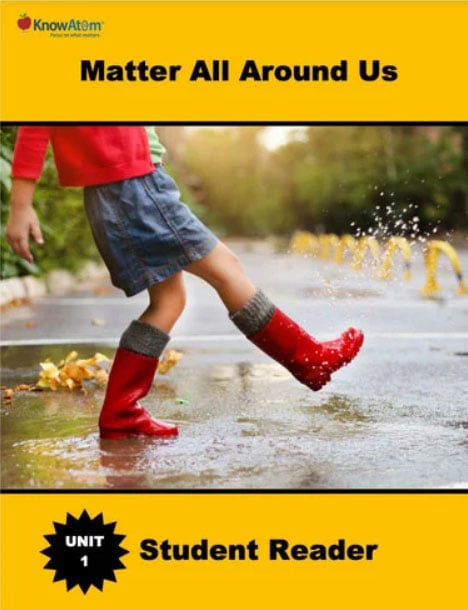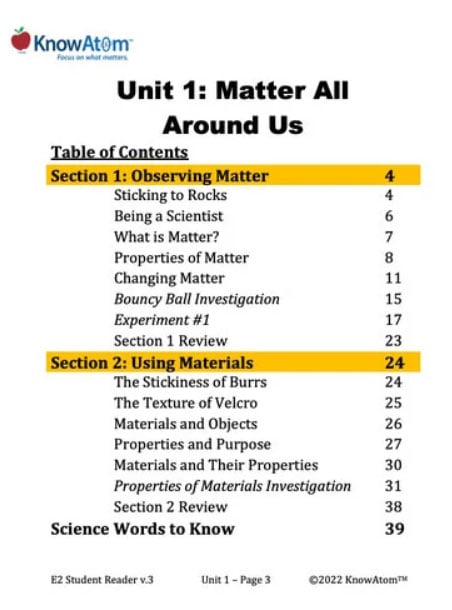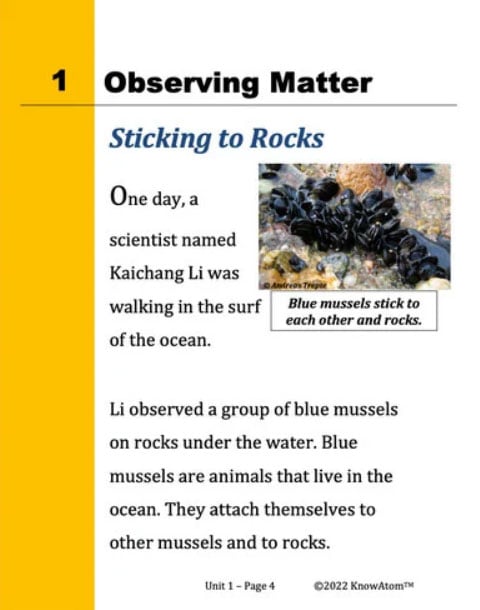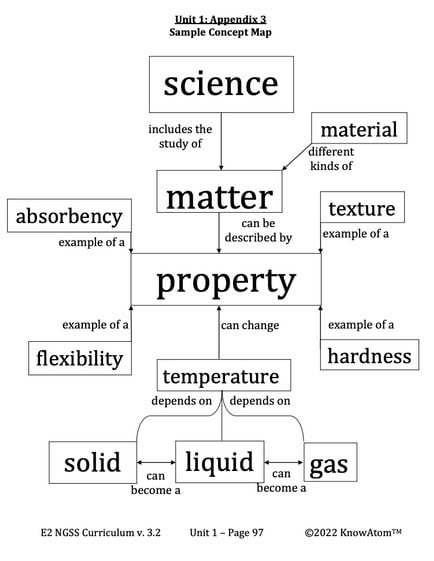Absorbency : the ability of a solid material to soak up a liquid
Flexibility: the ability of a solid material to bend easily without breaking
Gas: matter that has no shape and spreads out, completely filling its container
Hardness: the ability of a solid material to keep its shape when an outside force is applied
Liquid: matter that takes the shape of its container but has no shape of its own
Material: any kind of matter that makes up objects
Matter: everything that is made up of atoms and takes up space; includes all of the solids, liquids, and gasses around us
Property: an observable or measurable characteristic of matter
Science: all knowledge learned from experiments
Solid: matter that holds its own shape until something changes it by force
Temperature: a measure of heat
Texture: the way a material or object feels










